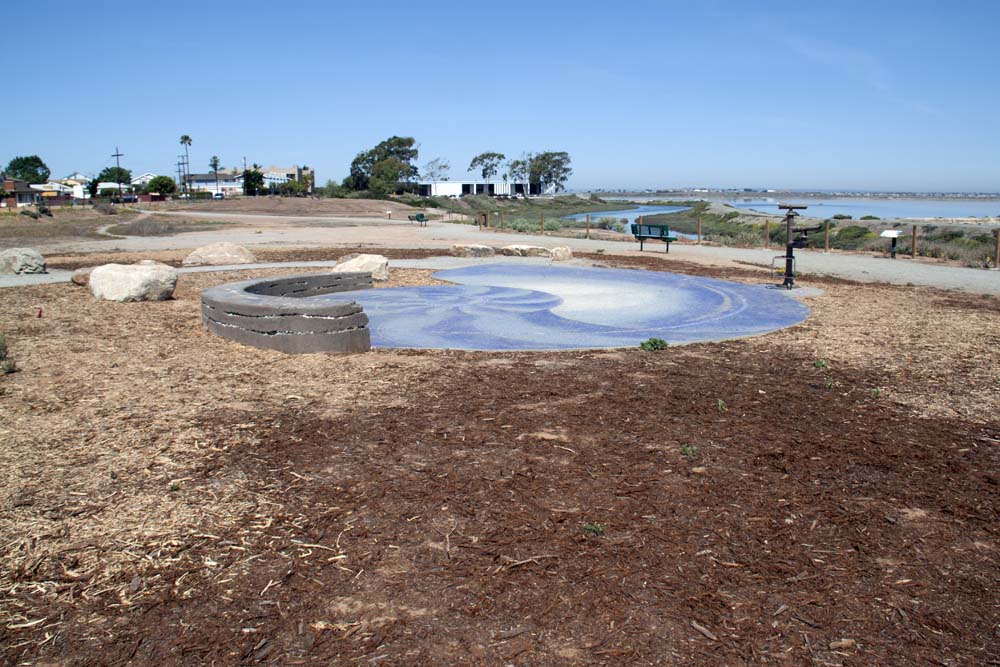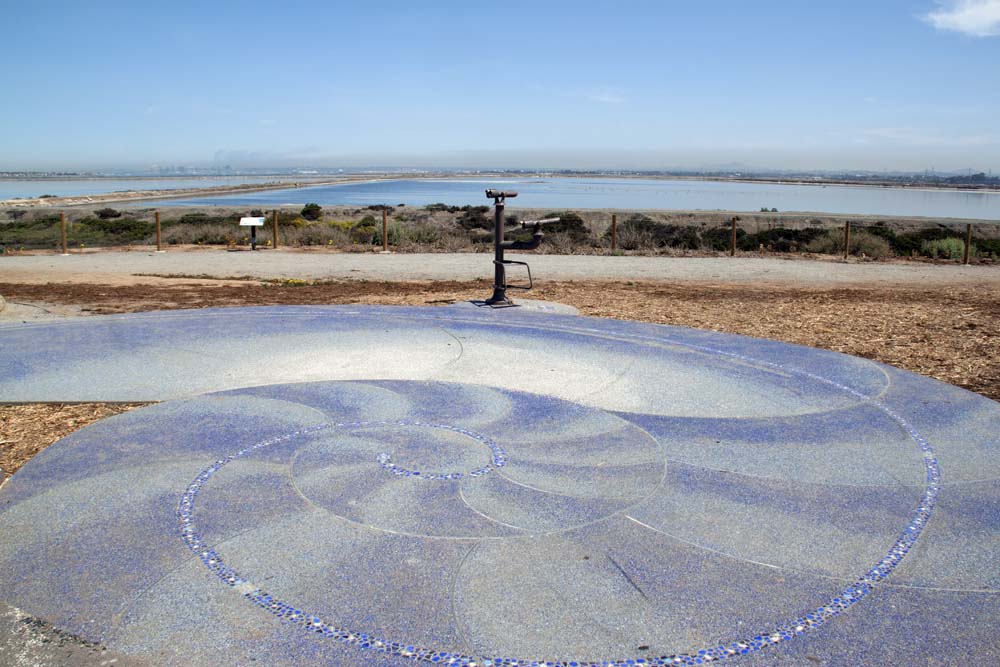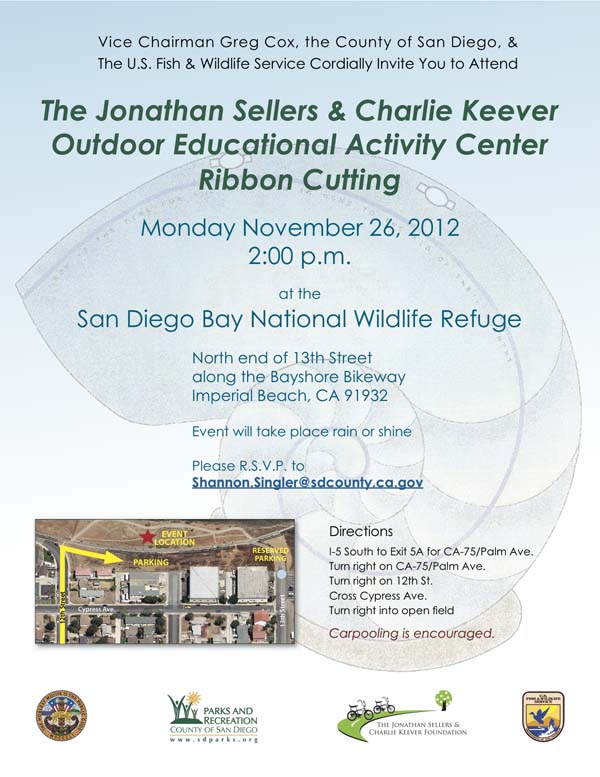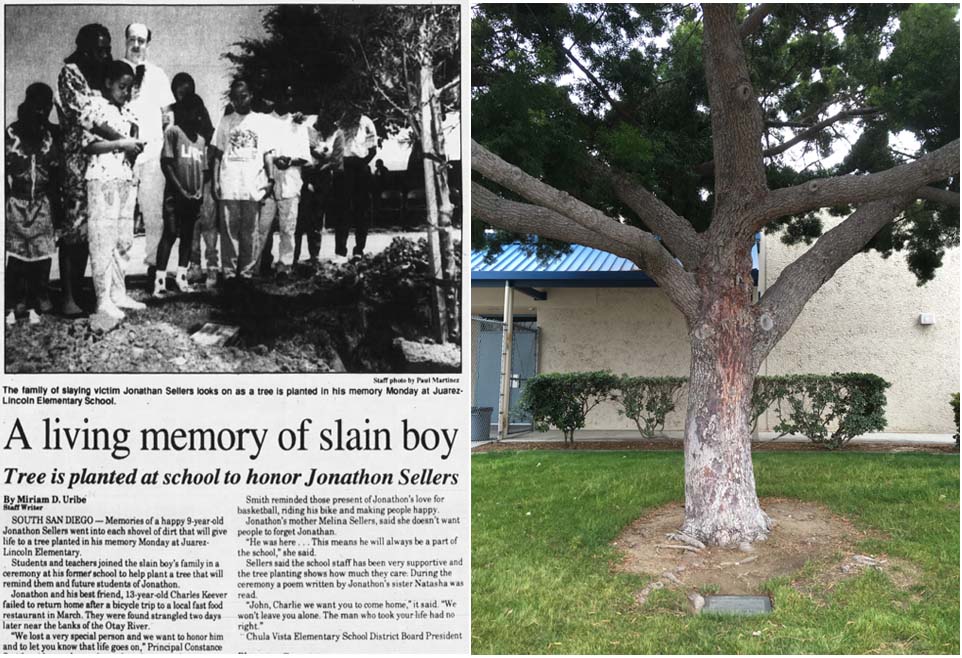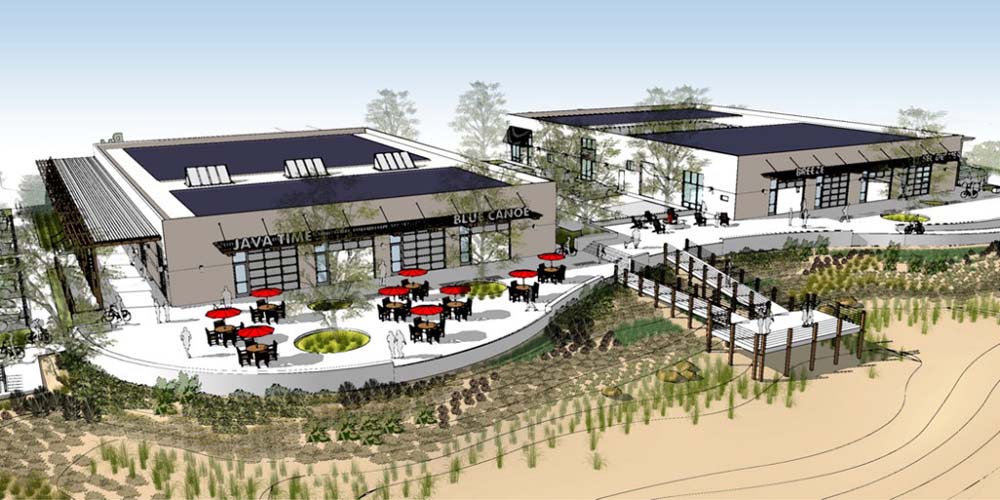|
Jonathan Sellers & Charlie Keever Educational Activity Center
The Sellers-Keever Park is a memorial to two boys who were murdered along the Otay River in 1993. It has been located along the Bayshore Bikeway at the end of 13th Street since 2012.
The death of the boys was portrayed in the newspaper as part of a "bloody spree" and an "unprecedented wave of violence that hit the South Bay" in March 1993, leaving 11 people dead in a two-week period, including 13-year-old Charlie Keever and 9-year-old Jonathan Sellers who lived near their Juarez Lincoln Elementary School.
A U-T story Nov. 26, 2012, described the park's design: "The floor of the activity center is in the shape of a nautilus shell. Small pictures of the boys are embedded in the tiling. Big boulders have been placed there for kids to climb, and wildlife viewing telescopes overlooking the San Diego Bay National Wildlife Refuge have been erected." Another story described the 19-year quest of one of the boys' mother to create the memorial: "The Chelsea King/Amber Dubois drama that unfolded in the media in 2010 brought back many memories and was a catalyst for Milena Sellers-Phillips. After the deaths of Chelsea and Amber, Sellers-Phillips decided last year to pursue a park that a politician had promised nearly two decades ago to honor Jonathan and Charlie. She went to see San Diego Mayor Jerry Sanders, who had been police chief when the boys were killed. He suggested she and Keever go to the county, which they did and began working with Supervisor Greg Cox. Nine months later, the county supervisors approved construction of the small park at the end of 13th Street overlooking San Diego Bay in Imperial Beach, less than a mile from where the boys died. The action came on the 19th anniversary of the day the boys were abducted and killed. The park is "such a beautiful place," Seller-Phillips said, as she looked out toward the bay and the San Diego skyline. "This is such a positive, positive thing."
This was the announcement of the park's dedication Nov. 26, 2012, and includes a small map of the location.
The newspaper story of June 23, 1993, described the living memorial tree planted at Juarez Lincoln Elementary school where 9-year-old Jonathan Sellers went to school. "The tree, a macrophylla podocarpus, was donated by Robert Masaluski of Moennig Nursery in La Mesa. A granite marker, donated by Edward and Barbara Poe of Seaman-Poe Monument Company in San Diego, was set beneath the tree. Jonathan's mother Melina Sellers, said she doesn't want people to forget Jonathan. "He was here . . . This means he will always be a part of the school." The tree and brass plaque are well-maintained today by the school, with new grass planted every year around the tree in an area near the school entrance that is heavily traveled by students.
Each year since 2013 the The Jonathan Sellers & Charlie Keever Foundation has sponsored the "Ride for Safety" community bike ride and child safety fair.
This is a drawing of Bikeway Village that is under construction on the opposite side of the bikeway path from the park. A Reader article in January described the project: "Bikeway Village will feature a large outdoor deck, bicycle parking, a water-bottle refill station, and public restrooms. The project is also intended to be the "greenest development on the bay" not only by encouraging bike transit but also by using solar power cells on the roofing and using paint and finishes that have minimal pollutants. The project will involve 30,000 square feet of land, renovations on the existing warehouses to cut large doorways that will have roll-up door access for retail stores, and the building of a "mock pier" in the nature area, according to architect John Sheehan of Studio E, the same company that designed Imperial Beach's Pier Plaza. The project also involves the San Diego Association of Governments and the LandLAB design firm. Costing $4.5 million, the construction will employ up to 40 construction workers at a time, according to Terry Arnett of TSA Contracting, who added that there has been five years of pre-construction already. "Imperial Beach was the missing link in the chain" of Coronado, National City, Chula Vista, and San Diego, said Imperial Beach City Council member Lorie Bragg. "It's going to be a world-class spot." "I'm spending too much time in Imperial Beach," quipped county supervisor Greg Cox, who was also at the ceremony. Cox said the goal is to create connecting paths all around the bay."Maybe someday you'll be able to ride down a tube under the Coronado bridge," Cox said of a plan to suspend a tube-like structure under the Coronado Bridge to accommodate bikes and pedestrians."
|
||||||
|
Home •
About Us •
Next Meeting •
Latest News •
Resources •
Organizations •
Exhibits •
Bulletins
Contact
|
||||||
|
This web page was created May 24, 2016, and revised May 25, 2016, by Steve Schoenherr for the South Bay Historical Society | Copyright © 2016
|
